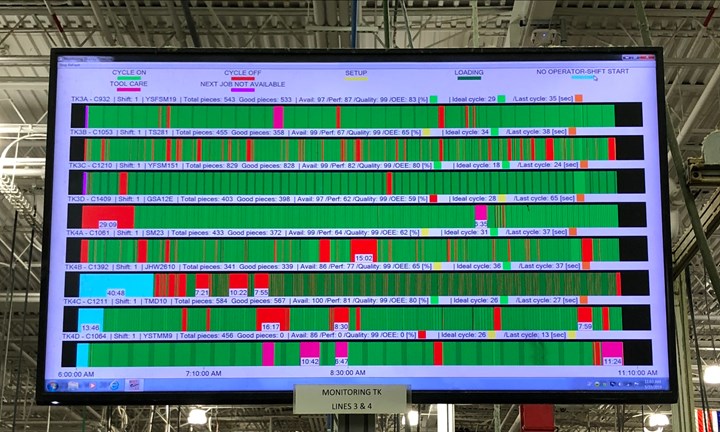Is Leveraging the IoT Really 'Smart Manufacturing'?
The vulnerabilities exposed by many of the IoT’s smart manufacturing solutions should keep manufacturers on their toes. There are strategies they can put into place to protect their data and equipment.
#columns #Industry40

Industry 4.0 is often referred to as “smart manufacturing,” where technology enables interconnectivity for machines and manufacturing software and systems. It also provides big data, increased visibility and remote access to manufacturing assets. The rush toward smart manufacturing that drives manufacturers to connect their systems to the IoT has unfortunately led to an inviting number of security gaps that are easy targets for hackers. Manufacturing companies are trying to achieve the smart manufacturing goals of increased production efficiency, reduced waste and downtime, improved quoting and improved inventory management from the IoT connectivity. Therefore, the manufacturing industry is the top buyer of IoT devices, and those connected devices on the shop floor are prime targets for cyber threats. According to a report released by NTT Security in 2017, manufacturing was the most cyber-attacked industry in the U.K., accounting for 46% of all cyber attacks.
What the Hackers Want
Hackers of industrial networks are interested in company assets such as customer data, intellectual property, banking information, and control of machines and robots, which can unfortunately cause damage and injuries in manufacturing plants. Cyber thieves routinely sell such proprietary data on the dark web, potentially to a manufacturer’s direct competitor or even foreign governments.
Legacy systems and machines that are no longer being updated often present prime targets for hackers, as networked legacy machines are not always compatible with the latest firewalls or anti-virus software. Manufacturers are well known for holding onto machines for as long as they can continue to make money from them. Rarely does a manufacturer have all new machines that have a common, secure communication protocol that is easy to manage.
The manufacturing workforce may be highly skilled labor, but often company training is lacking for IoT best practices. If there’s a security hurdle that stands in the way of meeting production demands, some manufacturing managers will disable that security, especially during times of high demand, such as those most manufacturers are experiencing today.
It’s not just manufacturers and their machines that are exposed by IoT connections. According to cybersecurity company Darktrace, in 2017 an unnamed North American casino was the victim of a hack into which the cyber attackers gained access to the casino’s network through an internet-connected fish tank thermometer.
Solutions for Manufacturers
Manufacturers need to clearly understand that unless every IoT device they have connected is always kept up to date with the latest security updates and patches, their networks will remain extremely vulnerable to cyber-attacks. Since there have been machines on the shop floor with Ethernet and Windows capabilities for more than 20 years now, fully securing these legacy assets can probably be best described as “mission impossible.” With data security being such a major concern for connected devices, IoT manufacturers may even want to consider purchasing one of the cyber-security insurance policies that are now available on the market. With so many vulnerable IoT entrance points, it’s no longer a question of if they’ll be hacked, but rather when. Organizations who leverage IoT technology should have a plan in place for when that happens.
A Smart Manufacturing Alternative
There is a simple yet effective alternative for achieving data-driven manufacturing goals. Rather than connecting machines and systems to the IoT, discreet manufacturers are increasingly deploying closed-loop, locally hosted machine monitoring systems that function solely within the well protected environment of their internal Ethernet networks.
One such system is eNET Machine Monitoring, which installs data I/O boards into machines to automatically capture the exact production data that is most valuable to a manufacturer. However, production data isn’t the only information that can be gained through this type of monitoring system. For example, eNET combines its monitoring boards with a software feature called “Cycle Start Disable.” This feature allows for setting a pre-determined time limit that a machine can sit idle before the operator is forced to enter a downtime reason code, which then unlocks the cycle-start button again to continue running production.
So, unlike IoT systems that can only provide basic data for when the machine is running, eNET provides its customers with a true 24/7 in-depth understanding of their machine utilization. This approach to Industry 4.0 also allows for a single solution for the whole shop, as eNET can even be used to monitor manual machines.
About the Author
Luke Galindo
Luke Galindo is a proud machinist by trade and is now serving the manufacturing community as the corporate sales & marketing director for eNETDNC & Machine Monitoring. eNET provides CNC software and hardware solutions, serving the manufacturing industry for more than 25 years with resellers throughout North America. Contact: luke@enetdnc.com or 414-817-7070.
RELATED CONTENT
-
What Machine Shops Should Know About Material Bar Straightness
Many operations require a high degree of bar straightness, especially when the material is to be presented to a machine by a bar feeder. For that sector of the market, the following is a brief review of the steps your bar supplier can take to ensure positive results.
-
4 Advantages of Acquiring Another Machining Business
Opportunities to expand CNC machine shop businesses via acquisition come with advantages that manifest themselves in terms of customers, employees, production technologies and business practices.
-
Good Bonding and Coating with Contact Angle Measurements
Darren Williams answers common questions about using a contact angle measurement to determine part cleanliness. Using water to test cleanliness reveals the effectiveness of a cleaning process.



